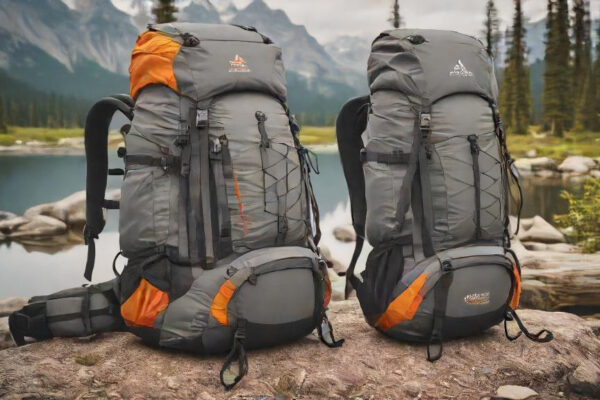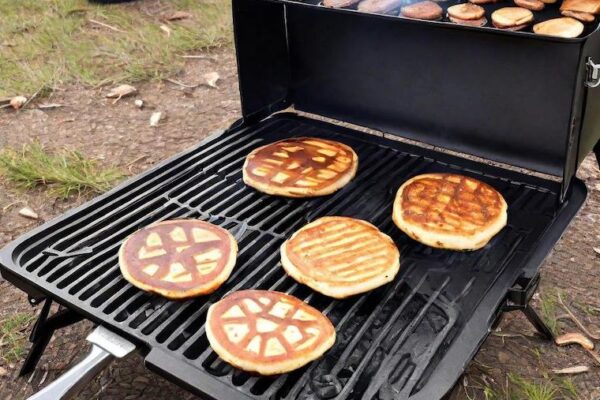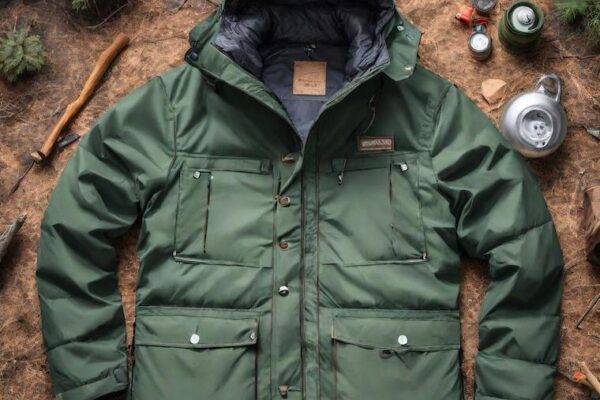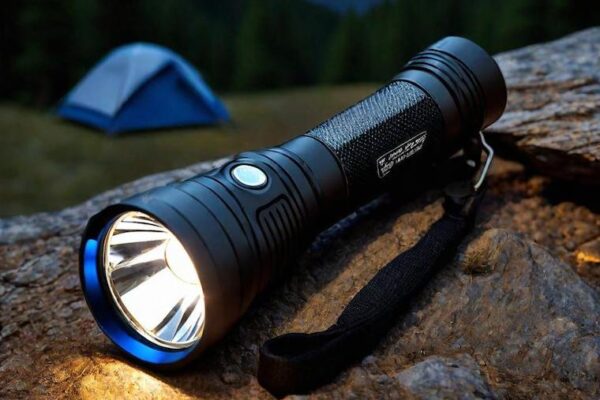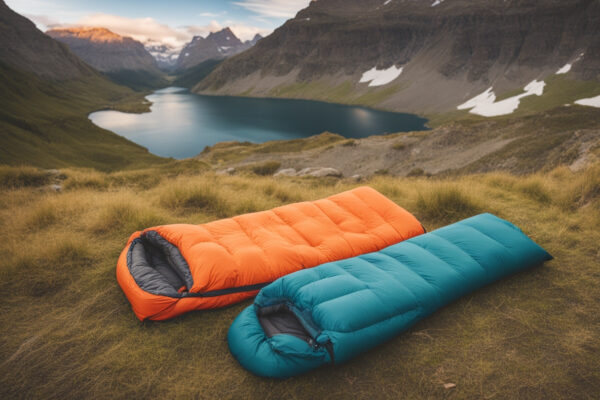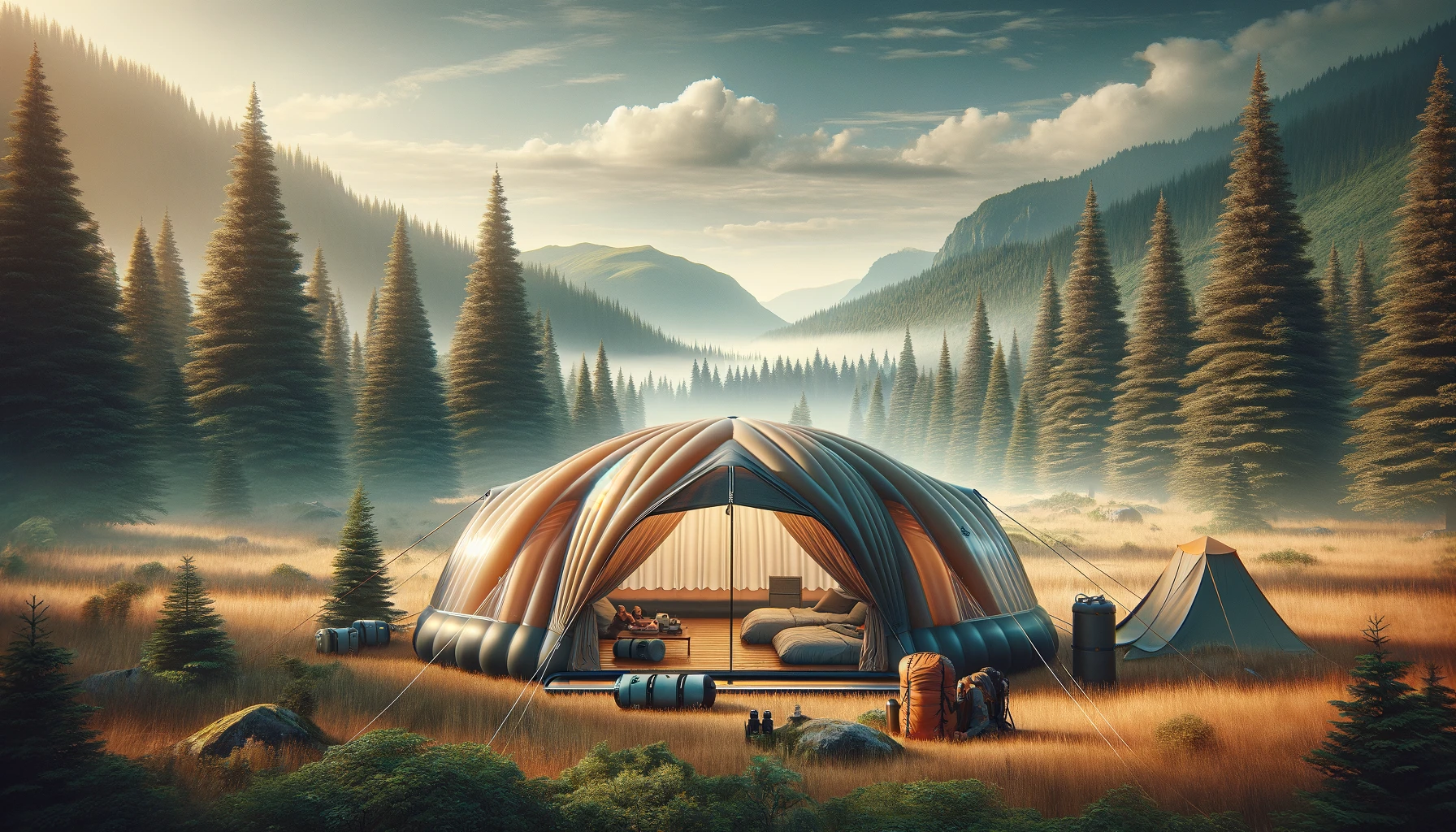
The Ultimate Guide To Essential Camping Gears
Embarking on a camping adventure is a journey into the heart of nature, an escape from the hustle and bustle of daily life. Whether you’re a seasoned outdoor enthusiast or a novice camper, the key to a successful and enjoyable camping experience lies in having the right gear. The Ultimate Guide to Essential Camping Gears is your compass in navigating the vast landscape of camping equipment, ensuring that you are well-equipped to embrace the wilderness with confidence and comfort. From shelter to cooking essentials, navigation tools to safety gear, this comprehensive guide will walk you through the must-haves, guiding you towards a memorable camping experience under the open sky.
- What Are The Essential Camping Gears Needed For A Beginner Camper?
- What Are The Top-Rated Sleeping Bags For Camping In Various Weather Conditions?
- What Are The Essential Navigation Tools And Equipment For Wilderness Camping?
- What Types Of Fire-Starting Tools And Equipment Should Bring For Camping?
- What Camping Gear Is Necessary For Camping In Bear Country Or Other Wildlife Habitats?
- What Camping Gear Is Necessary For Camping In Cold Or Snowy Conditions?
- What Camping Gear Is Essential For Camping In Rugged Terrain Or Mountainous Regions?
- How Can Select The Best Camping Gear For Camping In Areas With Strict Leave No Trace Principles?
- Conclusion
What Are The Essential Camping Gears Needed For A Beginner Camper?
For a beginner camper, having the right essential camping gear is crucial for a comfortable and enjoyable outdoor experience. Firstly, a quality tent is at the top of the list. Look for a tent that is easy to set up, durable, and appropriate for the expected weather conditions. Consider the size of the tent based on the number of campers and opt for one with proper ventilation to ensure a comfortable sleep. Additionally, having a reliable sleeping bag and sleeping pad is essential for a good night’s rest. Choose a sleeping bag with the appropriate temperature rating for the season and climate of your camping destination. A sleeping pad provides insulation from the cold ground and adds an extra layer of comfort.
Another essential camping gear for beginners is a portable cooking system. This may include a compact camping stove, cookware, and utensils. Look for a stove that is easy to use and fuel-efficient. Having a reliable source for preparing hot meals and beverages adds to the overall camping experience. Additionally, a suitable cooler for storing perishable food items and beverages is essential. Look for one with good insulation to keep items cold for an extended period.
A basic camping gear list should include appropriate clothing and footwear. Dress in layers, considering the potential weather changes, and invest in waterproof and moisture-wicking materials. Comfortable and supportive hiking boots or shoes are vital for exploring the outdoor surroundings. By ensuring these essential camping gears are packed and in good condition, beginners can embark on their camping adventures with confidence, ready to embrace the beauty of nature.
What Are The Top-Rated Sleeping Bags For Camping In Various Weather Conditions?
Choosing the right sleeping bag is crucial for a comfortable and enjoyable camping experience in various weather conditions. For cold weather camping, the Western Mountaineering Kodiak MF is highly regarded. This sleeping bag is known for its exceptional warmth and durability, with a high-quality down fill and a well-designed hood that helps retain heat. It is suitable for colder temperatures, making it a top choice for campers exploring cooler climates.
For three-season camping, the REI Co-op Magma 15 offers an excellent balance of warmth, weight, and affordability. With its down fill, it provides insulation for chilly nights while remaining relatively lightweight for easy packing and carrying. The Magma 15 is versatile enough to accommodate a range of temperatures, making it an ideal choice for campers who experience varying weather conditions throughout their adventures.
In warmer weather, the Sierra Designs Backcountry Bed 700 is a top-rated option. This unique sleeping bag features a zipperless design with a comforter-like flap, providing excellent ventilation for hot nights. The versatile design allows for easy temperature regulation, making it suitable for summer camping when temperatures can fluctuate. Its comfort and innovative features make it a favorite among campers looking for a lightweight and adaptable sleeping bag for milder conditions. Ultimately, the best sleeping bag depends on individual preferences and the specific weather conditions of the camping destination.
What Are The Essential Navigation Tools And Equipment For Wilderness Camping?
Wilderness camping requires careful preparation, and having the right navigation tools and equipment is essential to ensure a safe and enjoyable outdoor experience. Firstly, a reliable map and compass are fundamental tools for wilderness navigation. Detailed topographic maps of the camping area, paired with a quality compass, help campers orient themselves, plan routes, and navigate the terrain accurately. In regions with challenging landscapes or limited visibility, these tools become invaluable for maintaining a sense of direction and preventing disorientation.
Global Positioning System (GPS) devices are another essential component of navigation equipment for wilderness camping. While maps and compasses are traditional and dependable, GPS devices provide real-time location tracking, making it easier for campers to follow designated routes and avoid getting lost. Additionally, GPS devices often allow users to mark waypoints, track distance traveled, and plan routes in advance. Campers in wilderness areas with complex trail systems or dense vegetation can greatly benefit from the precision and convenience offered by GPS technology.
Navigation aids such as trail markers, cairns, or signage provided by park authorities contribute to a safer camping experience. These markers help campers stay on designated trails and prevent them from straying into ecologically sensitive areas. In the absence of clear trails, navigational aids become even more critical for maintaining a low impact on the environment and minimizing the risk of getting lost. In conclusion, a combination of traditional tools like maps and compasses, modern technology such as GPS devices, and reliable on-the-ground markers ensures that wilderness campers can navigate their surroundings effectively and enjoy a safe and memorable outdoor experience.
What Types Of Fire-Starting Tools And Equipment Should Bring For Camping?
When venturing into the great outdoors for a camping trip, having the right fire-starting tools and equipment is essential for both safety and comfort. One of the fundamental tools is a reliable lighter or waterproof matches. These provide a convenient and quick way to ignite your campfire. Additionally, it’s wise to bring a backup, such as a fire starter kit with flint and steel or a ferrocerium rod. These tools work in various weather conditions and are excellent for building a fire even in damp or windy environments.
Tinder is another crucial component of your fire-starting kit. Dry tinder materials like cotton balls soaked in petroleum jelly, birch bark, or commercially available fire starters can easily catch a spark or flame, helping you build a sustainable fire. Kindling, small sticks, and larger firewood should also be part of your gear to ensure you have the necessary materials to keep the fire burning. Portable, lightweight fire starters or cubes can be convenient for quickly getting your fire established without the need for newspaper or additional accelerants.
Lastly, a collapsible or portable fire ring can be a responsible choice when camping to contain your fire and minimize its impact on the environment. Always be aware of local regulations and guidelines regarding fires, and ensure you have a reliable method for extinguishing the fire completely before leaving the campsite. By bringing a well-rounded selection of fire-starting tools and equipment, you’ll be better prepared to enjoy a safe and enjoyable camping experience.
What Camping Gear Is Necessary For Camping In Bear Country Or Other Wildlife Habitats?
When camping in bear country or other wildlife habitats, it’s crucial to prioritize safety by bringing the right camping gear. Firstly, a bear-resistant food container is essential for storing all food, toiletries, and other scented items. This helps prevent bears and other wildlife from being attracted to your campsite, reducing the risk of dangerous encounters. These containers are designed to withstand a bear’s attempts to open or break them, providing a secure way to store items that might attract wildlife.
A quality bear-resistant canister or container is not the only piece of necessary gear. Bear spray, a potent pepper spray specifically designed to deter bears, should also be included in your camping essentials. It’s important to know how to use bear spray properly and to keep it readily accessible. Additionally, consider using a bear-resistant tent, which is specially designed to minimize the chances of bears or other large wildlife breaking into your shelter. This type of tent often features reinforced fabric and secure closures to enhance safety in bear country.
Camping in wildlife habitats also requires a heightened awareness of your surroundings. Essential gear includes a headlamp or flashlight for nighttime visibility, as well as binoculars for observing wildlife from a safe distance. It’s advisable to carry a first aid kit, including items for treating injuries sustained in encounters with wildlife. Understanding and respecting the local wildlife, following proper camping ethics, and adhering to guidelines provided by park authorities contribute significantly to a safe and enjoyable camping experience in bear country or other wildlife habitats.
What Camping Gear Is Necessary For Camping In Cold Or Snowy Conditions?
Camping in cold or snowy conditions requires careful preparation and the right gear to ensure a safe and enjoyable experience. Firstly, a high-quality, four-season tent is essential. These tents are designed to withstand harsh weather conditions, providing better insulation and protection against wind, snow, and cold temperatures. Look for tents with sturdy poles, durable fabrics, and adequate ventilation to minimize condensation inside the tent.
Investing in a cold-weather sleeping bag is crucial for a comfortable night’s sleep. Choose a sleeping bag with a temperature rating suitable for the expected conditions, ensuring it provides enough insulation. Many cold-weather sleeping bags also feature mummy-style designs that help retain body heat. Additionally, using a sleeping pad is essential to insulate from the cold ground and provide extra comfort. Closed-cell foam or inflatable pads with high R-values offer effective insulation and protection against the chilly ground.
Layering is key when dressing for cold camping conditions. Opt for moisture-wicking base layers to keep sweat away from the skin, insulating layers to trap body heat, and a waterproof and windproof outer layer to protect against the elements. Warm, waterproof boots with good traction are crucial to keep feet dry and prevent slips on icy or snowy terrain. Other essentials include insulated gloves, a hat, and a good quality winter jacket. Overall, having the right camping gear for cold or snowy conditions is essential to stay warm, dry, and safe while enjoying the beauty of winter camping.
What Camping Gear Is Essential For Camping In Rugged Terrain Or Mountainous Regions?
Camping in rugged terrain or mountainous regions demands careful consideration of essential gear to ensure a safe and enjoyable outdoor experience. The first crucial piece of equipment is a durable and reliable backpack, specifically designed for carrying gear through challenging terrains. Look for a backpack with reinforced seams, adjustable straps, and multiple compartments to efficiently distribute the weight of your camping gear. Brands like Osprey or Deuter offer backpacks tailored for rugged environments, providing comfort and functionality.
Footwear plays a pivotal role in mountainous camping. High-quality hiking boots with excellent ankle support, sturdy soles, and waterproof capabilities are indispensable for traversing uneven and rocky surfaces. Brands such as Salomon, Merrell, or The North Face offer boots designed for rugged terrains, ensuring stability and protection. Additionally, investing in lightweight but insulated sleeping gear is crucial for staying warm in mountainous regions. A four-season sleeping bag and a durable, weather-resistant tent designed for high-altitude conditions are vital for a comfortable and safe night’s sleep in unpredictable mountain weather.
Navigational tools are also essential for camping in mountainous terrain. A reliable topographic map, a compass, and a GPS device will help you navigate complex landscapes, ensuring you stay on the right trail and reach your intended destination. Familiarize yourself with the area’s topography and potential hazards, and consider taking a navigation course if you are not already proficient in using these tools. Being well-prepared with the right camping gear for rugged and mountainous regions will significantly enhance your outdoor experience while promoting safety and environmental responsibility.
How Can Select The Best Camping Gear For Camping In Areas With Strict Leave No Trace Principles?
When selecting camping gear for areas with strict Leave No Trace (LNT) principles, it’s essential to prioritize lightweight, durable, and eco-friendly options. Choose gear that minimizes your environmental impact and adheres to the principles of LNT. For shelter, consider using a lightweight and compact tent that leaves a minimal footprint. Look for tents that use eco-friendly materials and have a low impact on the environment. Additionally, opting for a hammock or a tarp setup can be a LNT-friendly alternative as they have less impact on the ground, allowing you to follow the “Leave No Trace” ethos more closely.
Selecting a stove or cookware with a minimal environmental footprint is crucial. Choose a lightweight, compact, and fuel-efficient stove that utilizes renewable energy sources, such as biofuels. In areas where open fires are restricted or discouraged, a portable stove becomes even more valuable. For hydration, consider using a water filtration system instead of disposable plastic bottles to reduce waste. Opt for gear made from sustainable materials, and prioritize multi-use items to minimize the number of products you bring into the natural environment.
Packing out waste is a fundamental principle of Leave No Trace, so choosing reusable and biodegradable toiletries is essential. Invest in a portable and lightweight waste disposal system, including reusable containers and bags for your trash. Additionally, ensure that your clothing is made from eco-friendly materials and is suitable for various weather conditions, reducing the need for multiple items. By carefully selecting camping gear that aligns with Leave No Trace principles, you can enjoy the outdoors responsibly while minimizing your impact on the environment.
Conclusion
Through The Ultimate Guide to Essential Camping Gears, remember that each piece of equipment is a vital thread in the tapestry of your outdoor experience. The right gear not only enhances your comfort but also contributes to your safety and overall enjoyment of the natural world. Whether you’re planning a rugged backcountry expedition or a family camping trip, a well-prepared camper is a happy camper. Armed with the knowledge gained from this guide, venture forth into the great outdoors with confidence, knowing that you have the essential tools at your disposal to make your camping adventure truly unforgettable. May your nights be filled with the crackling warmth of a campfire, and your days with the serenity of nature’s embrace.

